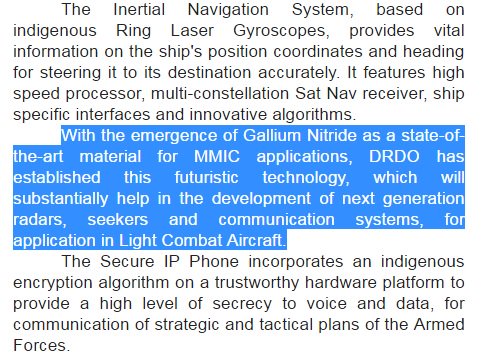- Joined
- May 26, 2010
- Messages
- 31,122
- Likes
- 41,041
AESA based arudhra medium power radar


4D is target information ..


4D is target information ..


I don't get it. Do we have the GaN tech or are we striving to achieve it in future?With the emergence of Gallium Nitride as a state-of-the-art material for MMIC applications, DRDO has established this futuristic technology, which will substantially help in the development of next generation radars, seekers and communication systems, for application in Light Combat Aircraft.

Source of these images please ?View attachment 14721 View attachment 14722 View attachment 14723
First look At DRDO's Gallium Nitride (GaN) Based embedded panels and technologies.

.............................Uttam AESA Update:
Ketan Gandhi: Sir any update on Project Uttam?
M.V. Reddy: Project Uttam LRDE has completed the development part of it and only the aircraft integration
part is left and that they are working out with ADA and once it is proved and then probably we
will get orders. We are in the fray and it may take some more time for us to get the production
quantity so the discussions are going on with, the DRDO is discussing with users so we are yet to
finalize the quantity and all sort of a thing.
Ketan Gandhi: Sir user trial is completed for Uttam or still under process?
M.V. Reddy: Not completed in fully.
Ketan Gandhi: So we are not sure whether it will be as soon as it is complete then only we will come to know
that whether it is we are getting that order or not?
M.V. Reddy: Yes I think, they are confident that it will be completed soon so we are hoping that this will be
completed in next year so I think that is a model way we have followed.
Ketan Gandhi: So after the initial quantity it might be if it is a stressful then we might see Project Uttam to be
fitted in the Tejas?
M.V. Reddy: Yes.
Ketan Gandhi: Thank you.
http://www.moneycontrol.com/stocks/...oducts-earnings-call-transcript-10642881.html
